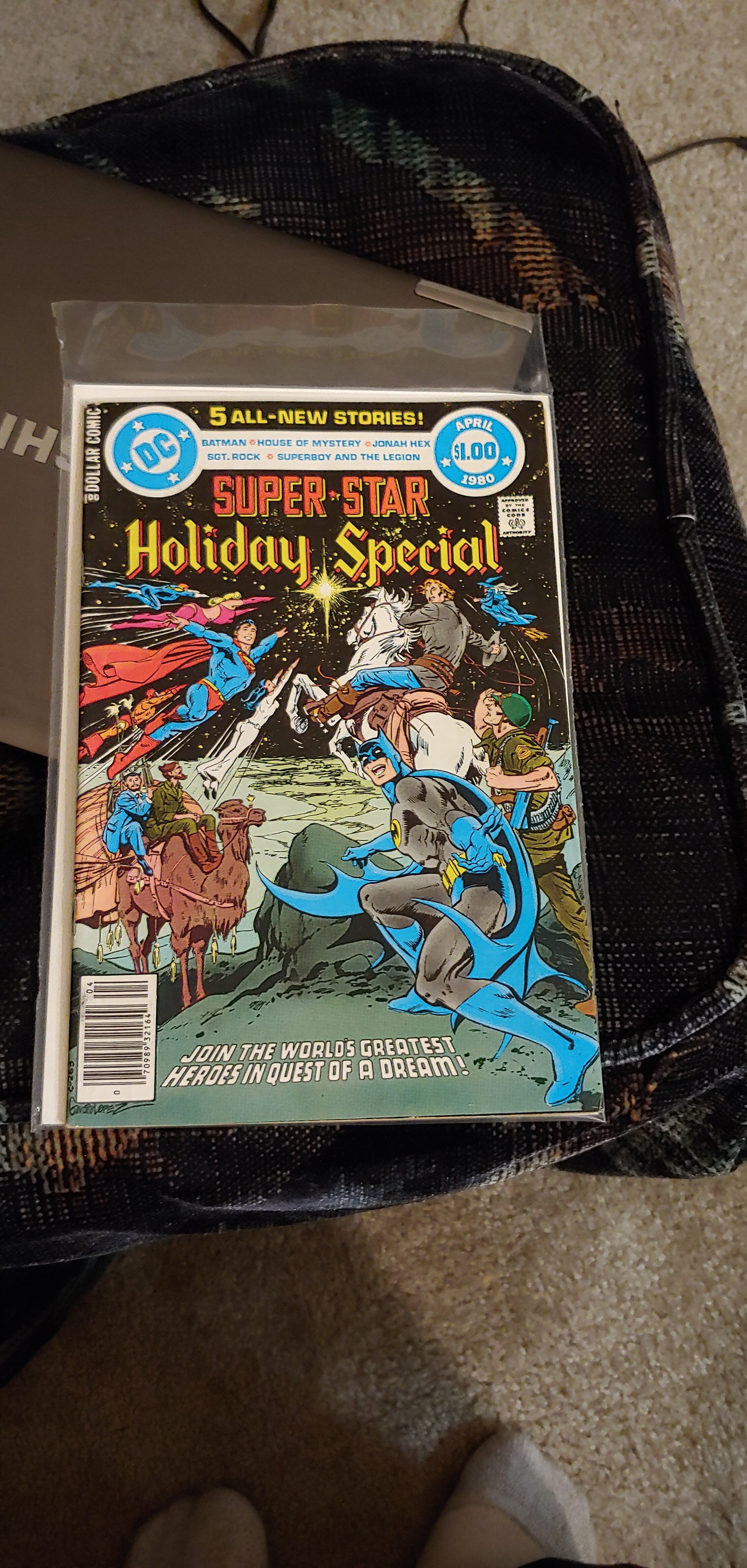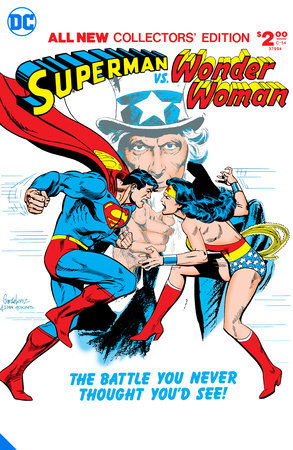This is a blog series about … well, series. I love stories that continue across volumes, in whatever form: linked short stories, novels, novellas, television, movies, comics.
Cover art by Murphy Anderson
The Atomic Knights, published by DC Comics, (hardcover collected edition: 2010)
Writers: John Broome
Art: Murphy Anderson
Editor: Julius Schwartz
I could write a whole post (and perhaps someday I will) on how I have DC’s 100-Page Spectaculars of the 1970s (and to a lesser extent, their digest-sized reprints in the 80s) to thank for my love of most of the company’s non-super-hero content, and in particular DC’s science fiction, adventure team, and historical characters of the early Silver Age (not to mention my love of their Golden Age superheroes). On the science fiction side of things, those oversized issues were rife with reprints of the exploits of (among others) Tommy Tomorrow, Adam Strange, the Star Rovers, Space Cabby, and the Atomic Knights.
Written by John Broome, with art by Murphy Anderson, and under the editorship of Julie Schwartz, the Knights debuted in Strange Adventures #117 (June 1960) and ran intermittently in the title under #160 (January 1964), a mere 15 adventures in three-and-a-half years. But what adventures they were – and what an effect they had on pre-teen and early-teen me when they were reprinted a decade or so later. I no longer own most of the various issues those reprints appeared in, nor do I know if every single Atomic Knights story was reprinted at the time. But in 2010, DC published a hardcover collection of all 15 original stories. I recently re-read it, hence this post.
For those who may not be familiar with the Atomic Knights, here’s the set-up: it is 1986 and World War III, the Great Atomic War, is over after a scant 20 days. Amnesiac soldier Gardner Grayle finds his way to a ruined city whose citizens are desperate for food and medicine, both of which are being hoarded by a warlord calling himself the Black Baron. Grayle teams up with some of the locals (Douglas Herald, a teacher; Marene, Douglas’s sister; redheaded twin brothers Hollis and Wayne Hobard; and a scientist named Bryndon) to take down the Baron wearing ancient armor that is impervious to the Baron’s radioactive weapons. Hence, the group name. The Baron is, unsurprisingly, defeated and run off in the first episode, whereafter the Knights alternate between protecting their small city of Durvale from a variety of menaces and traveling out to explore what’s left of the United States of America.
As was typical of comics of the period, the characterizations are rather flat, with each team member designed to fill a particular role. Gardner is the square-jawed, death-defying, motivational-speech-giving, “do what’s right no matter how dangerous” leader. Douglas is the practical-minded, thoughtful second-in-command and provider of much exposition. Marene is the requisite damsel-in-distress love interest. Wayne and Hollis are the loyal, do-as-told, muscle of the group. Bryndon is the scientist, the gadget man, and the not-so-subtle reminder that science without conscience is usually not a good thing. There are moments where some of these molds are broken (Wayne and Hollis get to build gliders for the team to use, something that usually would be Bryndon’s role; Marene finally gets to go undercover and save the day in the series’ final installment, “Here Come the Wild Ones,” although Broome still can’t resist having the story end with her thinking that as happy as she is that her mission was a success, she’d be happier if she and Gardner could finally get married and start a family.) but for the most part, each character plays his/her assigned role.
The stories started out very episodic, rarely mentioning what had come before other than the team’s origin. In the early adventures, the team visits other small enclaves of surviving humans as well as the remains of New York City and Los Angeles (in later stories, they also get to New Orleans, Detroit, and Washington DC), each time facing radiation-created monsters or greedy humans who need to be defeated. With the introduction of a revived Atlantean civilization as a threat, the stories develop stronger internal continuity, and it becomes clearer that the stories are progressing in something close to real time. While the stories were published between 1960 and 1964, the characters progress from 1986 to 1992, with some amazing advances in recovery from an atomic war (or “the hydrogen war,” as it’s called in some stories). The Atlantean threat is a 3-parter which also introduces the giant dalmatians (the first giant irradiated creatures that do not pose a threat) that will serve as the Knights’ steeds for the rest of the run.
Actual aliens visit the radiation-devastated Earth in “Menace of the Metal-Looters,” one of the series’ weaker entries, but they are the only extra-terrestrial threat the Knights face – the exception that proves the series’ rule: we humans are our own worst enemies, whether through misused technology, hubris and greed, or both. Okay, that’s not 100% true. “When The Earth Blacked Out” reveals that World War III / the Nuclear War / The Hydrogen War started not because of any one nation, but because of an energy pulse sent out by an underground civilization of mole people! (It was the 1960s, and lost underground civilizations were all the rage in SF and comics.) Douglas’ declaration that “we humans still cannot escape responsibility” (because we created the bombs in the first place) feels a little tacked on, almost insincere. I get what Broome was going for, but I think it would have been better for the series overall if the actual start of the war had just been left unexplored.
Throughout the run, Murphy Anderson’s art is consistently excellent. His characters have distinct facial features and body language, his action sequences are dynamic, and even the silliest monsters (I say again: mole people!) are threatening. There’s a reason he’s one of the most highly regarded and revered artists of the late Golden and Silver Age.
The 2010 hardcover collection does not include the Atomic Knights’ later appearances in DC Comics’ Kamandi and Hercules Unbound, wherein it was revealed that all three series shared the same future world, nor their appearance in DC Comics Presents. The Kamandi and Hercules Unbound appearances are included in a black-and-white paperback collection called Showcase Presents the Great Disaster Starring the Atomic Knights (whew!), which I recently ordered a copy of. I look forward to revisiting those stories. I do own a copy of the DC Comics Presents issue where Superman “teams up” with the Atomic Knights. I’ve always been conflicted about it. On the one hand, it relegates the original Strange Adventures stories to being the dreams of a soldier (Gardner Grayle) in suspended animation, in an unnecessary attempt to explain why the series’ 1986 and the real world 1986 look different – which I think does a disservice to Broome and Anderson. On the other hand, it did pave the way for a “modern times” Gardner Grayle to join The Outsiders (one of my then-favorite titles and teams) as The Atomic Knight, which I really liked.
Overall, my reread of the hardcover collection cemented why the sometimes-silly post-apocalyptic Atomic Knights series was, and remains, one of my favorite non-superhero DC runs.
If you enjoyed this post, check out some of my previous DC comics-related Series Saturday posts:
Silverblade, First Issue Special, Nathaniel Dusk, Young Heroes in Love











